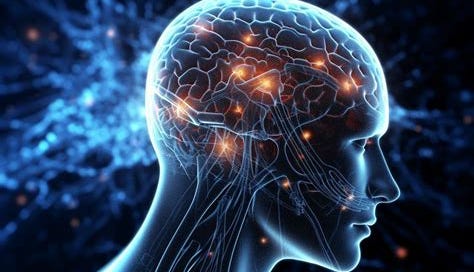Lately, I’ve been learning about brain plasticity. I already knew that “the most complicated object in the known universe” was amazing, but I had no idea exactly how versatile our brains are.
Unlike many other animals, who are born with instincts and sensory/motor skills that “work” almost immediately after birth, humans are born completely helpless. That’s largely because we come out of the womb with brains that are only partially developed, at least so far as they are “wired up” to our bodies.
This is probably because our huge craniums are already a stretch for the birth canal of our poor mothers. But the result is that our brains come out almost completely useless and must be “trained up” to manipulate our bodies and make sense of the outside world.
Our mouths are wired up (for latching onto the nipple) and serve as our first primary sense. But the rest of our senses and motor pathways have to be wired up outside the womb in an endless series of trial and error experiments.
We “dial in” our senses as we respond to various stimuli. We also cast our limbs about semi-randomly, reacting to what we feel happening as a result.
This all happens very early in our lives as our highly “plastic” brains wire up to our body so we can finish developing into humans. Of course, “finish” is the wrong word to use. We never stop developing and our brains retain a lot of plasticity right up until the day we die.
This early time is also when our highly malleable brain focuses in on the sounds of our native language, literally altering the sounds we are able to distinguish as it wires itself up to be able to understand and speak the language(s) it finds itself immersed in at a very early age.
The brain’s plasticity is on astounding display when we see people deal with brain injuries. The functions previously handled by the damaged areas of the brain are often “rewired” to different areas. Similarly, in blind people, the area of the brain that is normally where the visual cortex is located is used for other senses and purposes.
In fact, there are two tiny “maps” of the human body in the brain called “cortical homunculi”. One for sensory input and one for motor output. These maps aren’t to scale, the size of various areas depends on the importance to us of the various parts.
What is “important” is partially determined by genes and what is “normal” for a human. But over time, what is “important” becomes determined by what you focus on and practice. We literally alter the structure of our brains by what we do.
Famously, practiced violinists all have a very noticeable expansion in their brains in the area that controls their left hand. It looks like a “U”. Spend enough time practicing the violin and you’re brain will literally change so that you have this expansion as well.
We also see this phenomenon when people lose limbs and have to compensate. Areas of the brain that are no longer needed for the missing limb are taken over and used to control the remaining limbs. The brain’s ability to adapt to changing circumstances is incredible.
One of the most amazing things about brain plasticity is how much “plug-and-play” is involved. Our brains exist in the dark, sealed container of our skulls. Nothing comes in or out, except via electrochemical signals.
Our brains don’t “see” light or “hear” sounds. They receive zillions of electrochemical inputs that serve as representatives of light and sound, based on the nature of the biological eyes and ears that are connected to our brains. But our brains could interpret inputs from any kind of receptors. We need not be limited by our biology.
Similarly, our brains receive feedback signals from the arms and legs that are naturally wired into it. But there’s no reason we can’t “wire” other types of things into our brain for it to manipulate. All that is required is feedback and control circuitry that our brain can interpret — plus time and practice.
This means that our brains can use almost any kind of sensory input and figure out how to “make sense” of it. Scientists are already experimenting with expanding the range of our existing senses and even giving us brand new senses.
Similarly, our brains are already learning to operate robotic arms to replace limbs lost to accident or war. How far can we take this principle? Will our brains one day be able to operate robots on the moon as easily as they operate our legs as we walk across the room?
I think so. I think our amazing brains and their potential are just now beginning to be explored. What a wild time to be alive.
Naturally (?),
Adam
Like what we do here at Haman Nature? Feel like buying Tyrone and I a coffee? We’d greatly appreciate it!
PS: I like to keep these articles short, so obviously I left out a TON of detail on this subject. Check out the links for all the fleshed out details (and receipts) I omitted.



